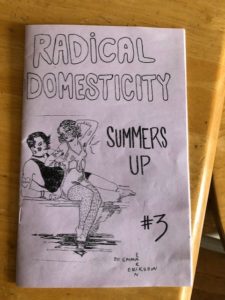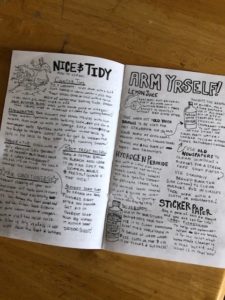For my response this week, I watched Secret and Divine Signs: A Cinematic Ode to the Art of Cruising, a Capstone Project by Terrence T. Hunt. Hunt’s short film looks at the changing practice of cruising in New York City. The film is accompanied by an artist’s statement that elaborates on the film’s themes, its creative process, and its stated purpose.
In his artist’s statement, Hunt argues that film is the best medium to convey his thesis subject; cruising has a “close relationship to cinema” both in its many representations in film and the practice itself which shares certain “ways of looking” with film spectatorship (“film spectatorship echoes the desiring gaze”) (4). Hunt also uses film to highlight and celebrate the beauty of queer spaces. Throughout the film, Hunt shows footage of popular cruising spots, many of which are of nature enclaves within NYC (bucolic park scenes, the flowing water of the Hudson River). This footage is overlaid with audio from interview subjects, describing their experience cruising in different locations. This footage is quite affecting and encourages the audience to think about (and maybe feel) the “erotic potential” of public space (6).
Hunt also wants to use film to bring his work outside of the academy and reach a broader audience of “queer, gay and bisexual men of different generations” (5). The artist’s statement frames his research questions within a scholarly context of queer history and film and media studies, while the film itself attempts to explore these concepts for this broader audience.
Although Hunt expresses the desire to show his film at festivals, perhaps an online/social media component to the project could have been an interesting addition (I understand given the still sensitive subject matter, this might not have worked). Further developing this project through a Youtube or public Vimeo channel could also have broadened his audience even more, and allowed Hunt to continue exploring the fascinating questions around class, sex and public spaces, eroticism and technology that he raises in this project. The questions he raises are maybe too numerous for the thesis film but could be creatively approached through film vignettes or interviews on an online platform.




